If you always wanted to learn how to measure the real pulse temporal shape of your laser – and use it to calculate the peak power – this is the perfect blog post for you.
Since power is a measure of how much energy is transferred in a unit of time, this is the prevalent parameter when it comes to lasers. However, if the laser is pulsed, things start getting complicated.
Where before, there was just power and maybe power density, now we start to see many more specifications: pulse energy, width, and repetition rate, as well as two kinds of power: peak and average.
Pay attention, because here’s where it gets confusing. The same laser can have an average power of 10 mW, but a peak power of 10 kW!
This video includes a lot more about the differences between peak and average power: https://www.youtube.com/watch?time_continue=2&v=agIeCtoST08
Let’s start with definitions: peak power – the highest power output from the laser (the power during the course of a pulse).
Average Power – An expression of the average power emission over time, expressed in Watts.
Most pulsed laser power meters display the total energy of a pulse, or alternatively the average power, not the peak power.
Divide the energy per pulse by the pulse width (in time) and you will get the peak power.
This is the power of the laser during the pulse, and it would be your only power spec if instead of pulsing the laser you never turned it off (as in a CW laser).
But since the laser is off some of the time (usually much more time than it’s on) the average power will be lower. A simple way to think of the average power is just the peak power times the duty factor. In other words, you’re averaging the power over the course of one on/off cycle of the laser.
So, if for example, your laser is 10 kW, and it pulses for 1 ns at 1 kHz (in other words, its duty cycle is 1/1,000,000 or 0.0001%). Since the laser is off a million times as much as it’s on, the effective average power is one millionth of the peak power, or 10 mW.
How can you measure the peak power of a pulsed laser beam using Ophir laser measurement equipment?
Ophir offers a nanosecond response time photodetector which is designed to measure the temporal behavior of pulsed lasers, the FPS-1 photodetector.
The FPS-1 is easily connected to an oscilloscope which displays a temporal trace of the power output during the pulse.
Since the oscilloscope does not display a trace of absolute power output over time, but rather the relative pulse behavior and shape, it cannot be used directly to find the peak power…
BUT! If we combine the FPS-1 measurement with a measurement of the total energy of the pulse using an Ophir energy meter we can do it.
How exactly?
*In the trace below let us say the total energy measured is 10mJ.
We can use this knowledge to find how many watts each “arbitrary unit” is equal to:
a) Sum the reading values in A.U. = total 268 A.U.
b) Find the approximate area under the trace by multiplying the sum by the step size, 268 * 0.1 ms = 26.8 A.U·ms
c) Energy = 10mJ = 26.8 A.U.·ms
d) Therefore 1 A.U. = 10mJ / 26.8ms = 0.373W
The peak power on the graph is 55 in A.U., so to convert to watts, we simply multiply by 0.373W/A.U. to get 20.5W.
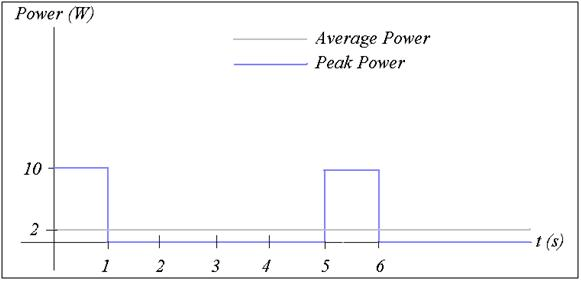
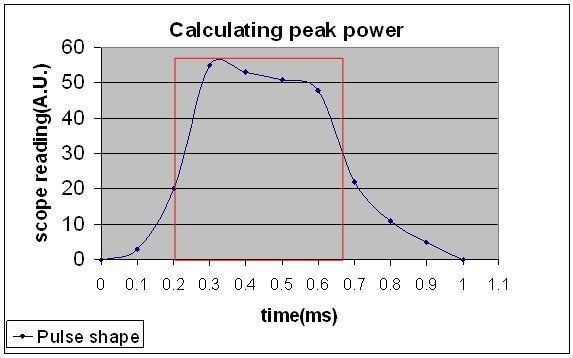


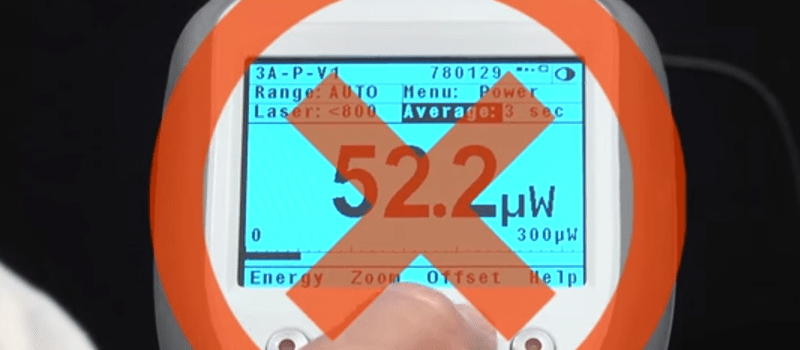
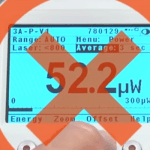


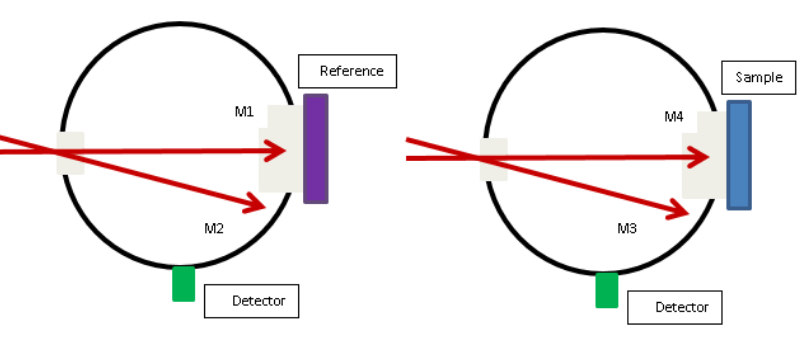
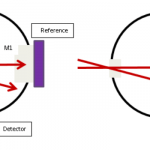



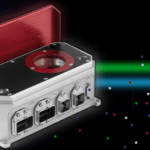
Leave a Reply
Your email address will not be published. Required fields are marked *